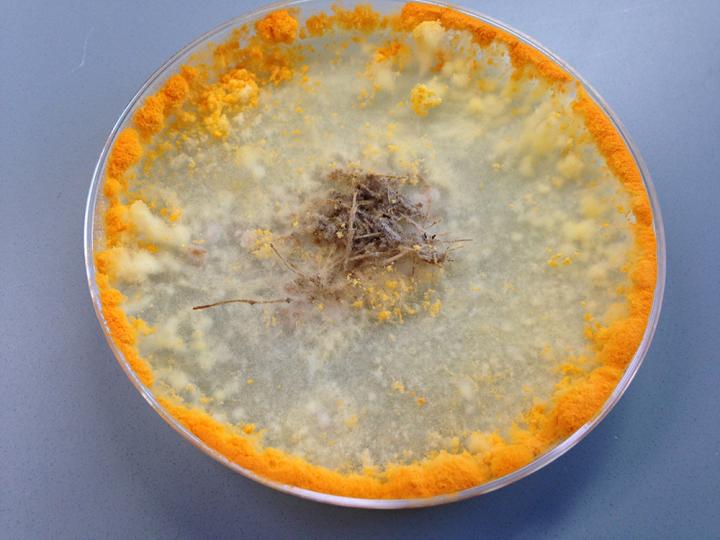Humans use same proteins to smell, taste, and see

Credit: Vincent Wu/JGI
New research shows the same proteins that enable human senses such as smell also allow certain fungi to sense something they can eat.
The UC Riverside study offers new avenues for protecting people from starvation due to pathogenic fungus-induced food shortages. Understanding how fungi sense and digest plants can also help scientists engineer fungal strains that are more efficient at producing biofuels.
Newly published by the American Society for Microbiology journal mBio, the study details how fungi react to cellulose, the main component of plant cell walls. Humans and other animals lack the enzymes to digest cellulose, but fungi can convert it into glucose, a sugar that makes an excellent biofuel feedstock.
Key to this conversion process are G proteins, which send signals from a cell’s outer membrane into its nucleus.
“These proteins get information about what’s outside the cell into what is essentially the brain of the cell, the nucleus, which in turn instructs the cell to produce a cocktail of cellulose-digesting enzymes,” said study author and biochemistry doctoral student Logan Collier.
To determine whether G proteins play a role in the ability of fungi to sense nearby cellulose, the researchers modified strains of a fungus called Neurospora crassa. Once the G proteins were mutated, Neurospora no longer had the ability to “see” that it was on cellulose.
Neurospora is a filamentous fungus, which means it’s made of thin tubes that extend and form a mesh as it grows. It plays a critical role in the environment, recycling carbon by consuming decaying plant matter and converting it into glucose.
It is also closely related to pathogenic fungi that kill crops such as tomatoes and wheat. One related species also causes rice blast, which destroys enough rice to feed about 80 million people annually. Knowing how to interfere with G protein signaling in the fungus so it cannot detect its “food” could be crucial to stopping these kinds of infections.
“No one has previously examined every member of the signaling pathway, creating a model for how every all of the G proteins work together,” said Katherine Borkovich, a UC Riverside microbiology and plant pathology professor, who led the study.
Moving forward, the research team would also like to apply what they’ve learned to biofuel production.
“It does appear from our study that there are ways to modify the fungus to produce extra cellulose-digesting enzymes, which would make them more efficient at breaking down biofuel feedstocks,” Collier said. Based on renewable sources like plants, biofuels can play a valuable role in reducing dependence on fossil fuels.
###
Media Contact
Jules Bernstein
[email protected]
Original Source
https:/
Related Journal Article
http://dx.




